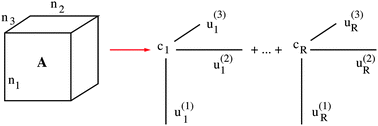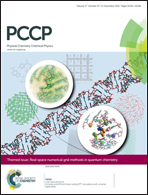Tensor numerical methods in quantum chemistry: from Hartree–Fock to excitation energies
Abstract
We resume the recent successes of the grid-based tensor numerical methods and discuss their prospects in real-space electronic structure calculations. These methods, based on the low-rank representation of the multidimensional functions and integral operators, first appeared as an accurate tensor calculus for the 3D Hartree potential using 1D complexity operations, and have evolved to entirely grid-based tensor-structured 3D Hartree–Fock eigenvalue solver. It benefits from tensor calculation of the core Hamiltonian and two-electron integrals (TEI) in O(n log n) complexity using the rank-structured approximation of basis functions, electron densities and convolution integral operators all represented on 3D n × n × n Cartesian grids. The algorithm for calculating TEI tensor in a form of the Cholesky decomposition is based on multiple factorizations using algebraic 1D “density fitting” scheme, which yield an almost irreducible number of product basis functions involved in the 3D convolution integrals, depending on a threshold ε > 0. The basis functions are not restricted to separable Gaussians, since the analytical integration is substituted by high-precision tensor-structured numerical quadratures. The tensor approaches to post-Hartree–Fock calculations for the MP2 energy correction and for the Bethe–Salpeter excitation energies, based on using low-rank factorizations and the reduced basis method, were recently introduced. Another direction is towards the tensor-based Hartree–Fock numerical scheme for finite lattices, where one of the numerical challenges is the summation of electrostatic potentials of a large number of nuclei. The 3D grid-based tensor method for calculation of a potential sum on a L × L × L lattice manifests the linear in L computational work, O(L), instead of the usual O(L3 log L) scaling by the Ewald-type approaches.

- This article is part of the themed collection: Real-space numerical grid methods in quantum chemistry

 Please wait while we load your content...
Please wait while we load your content...